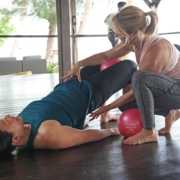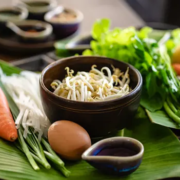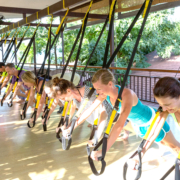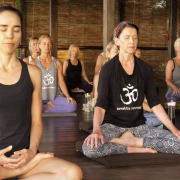 https://samahitaretreat.com/wp-content/uploads/2023/10/IMG_6469-scaled.jpg
1707
2560
Kirsten Mia
http://samahitaretreat.com/wp-content/uploads/2024/01/samahita-logo-v2.svg
Kirsten Mia2023-10-10 04:54:302024-02-15 09:17:08The Ripple Effect…
https://samahitaretreat.com/wp-content/uploads/2023/10/IMG_6469-scaled.jpg
1707
2560
Kirsten Mia
http://samahitaretreat.com/wp-content/uploads/2024/01/samahita-logo-v2.svg
Kirsten Mia2023-10-10 04:54:302024-02-15 09:17:08The Ripple Effect…3 Lifehacks to Handle Inflammation

1. Take out the Sugar, Add in Cocoa
Diets that promote inflammation tend to be high in refined starches, sugar, dairy, saturated and trans-fats. Choosing foods which are rich in omega-3 fatty acids, fiber from vegetables, and many natural antioxidants and polyphenols actively lower inflammation in the body (https://www.ncbi.nlm.nih.gov/pubmed/16904534). Two new studies recently presented at the Experimental Biology 2018 annual meeting last month, show how cocoa, isolated from sugar, acts as a potent antioxidant and anti-inflammatory agent, that supports cognitive, endocrine and cardiovascular health in human subjects. Researchers found that the higher the concentration of cocoa (at least 70%), the more positive the impact on cognition, stress levels, inflammation, memory, mood and immunity (https://www.sciencedaily.com/releases/2018/04/180424133628.htm). So open that dark chocolate, eat a square or two and enjoy, or mix some cocoa in with coconut milk for a delicious warm drink, just remember to keep the sugar out to reap all its health benefits.
2. Switch to a Cold Shower
“The cold makes you go within.” — Wim Hof
In addition to helping our environment, by using less fresh water and energy, cold showers are a great way to increase overall energy levels. They have been shown to increase energy production by stimulating mitochondria activity, which pump out ATP, the body’s energy currency. Cold showers help to reduce inflammation, which means you’ll feel better. They increase power performance by impacting other bodily hormones, and increase your “feel good” dopamine levels (https://www.ncbi.nlm.nih.gov/pubmed/10751106). Cold showers increase your health by aiding your immune system (https://www.ncbi.nlm.nih.gov/pubmed/10735978). They also make brown fat cells work more effectively, which reduces white fat; brown fat makes heat and less white fat means a leaner body. (https://www.nejm.org/doi/full/10.1056/NEJMoa0808718#t=article) (https://www.jci.org/articles/view/60433?key=5e3684aee3d55b74adc8). Just doing it helps to build mental power and sensory stamina. You will feel more alert and energized afterwards. Why not give it a try? Why not try it every day for 30 days?
We’ve started here at Samahita and would like to invite you to the challenge at home:
- The Easy Way – Start with a warm shower and shift into cold. Each time under the water, try increasing your time under cold water.
- The Enthusiastic Way – Straight in and stay cold. Even for just a few seconds. Feels much better after!
3. Breathing Technique: Śītalī
Managed breathing, with awareness, allows us to tap into our parasympathetic system, reducing strain and stress, which can be tied to the inflammatory response. Śītalī is one such breathing practice which has been thoroughly practiced and passed down by yoga practitioners, and is one of the eight varieties of pranayama described in the Hatha Yoga Pradipika (II. 56/57). Its name is even derived from the feminine form of a Sanskrit term meaning “cool”.
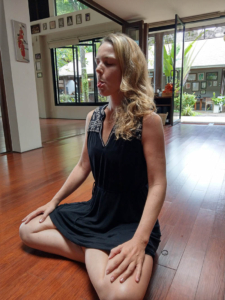
Typically, when air is inhaled through the nose, the external air is warmed up before it enters the lungs. When air is instead brought in through the mouth, it has an immediate cooling quality on our system.
We teach this breathing technique during our morning classes at Samahita Retreat. It’s a simple and effective practice to try each morning or evening, and only takes a few moments each day:
Begin with a supported seated position. Take a few breaths to connect with your posture, and root your sit bones down. Making sure not to over arch your lower back, on an exhale draw your lower abdomen in towards the sacrum for rooted support. At the end of your exhale, draw up from your pelvic floor, inhaling into your upper abdomen, side of the ribs and chest. Keeping the lift and send of expansion in your chest, pause, then begin your exhale. Let the air to draw out smoothly, naturally, and completing the exhalation and connecting once again with your lower abdomen. When this awareness is set, start to take a few breaths expanding your exhale to be double the count of your inhale. Then, try 10 rounds of Śītalī or Sītkārī. When finished, sit for a few moments and connect with the space you create, let any effort ease.
Śītalī
Roll up the tongue, so that the side edges touch together, both inside and outside the mouth, extending about one centimeter outside the lips. On the inhale, sip air in through the tubelike formation gently and smoothly, similar to using a straw. When inhalation is complete, the tongue is withdrawn and the lips are closed. Then slowly, exhale through both nostrils, for double the count. This timing should feel comfortable, not rushed or strained, otherwise reduce your inhalation.
Sītkārī
If rolling the tongue is difficult, you can use the technique of Sītkārī to achieve a similar effect. In Sītkārī arrange your jaw so that your teeth touch together. Then inhale, bring the air through the teeth, over the tongue, which may make a slight breeze sound. When inhalation is complete, close the lips, relax the jaw, then slowly exhale through both nostrils, for double the count.
More from the Samahita Blog
